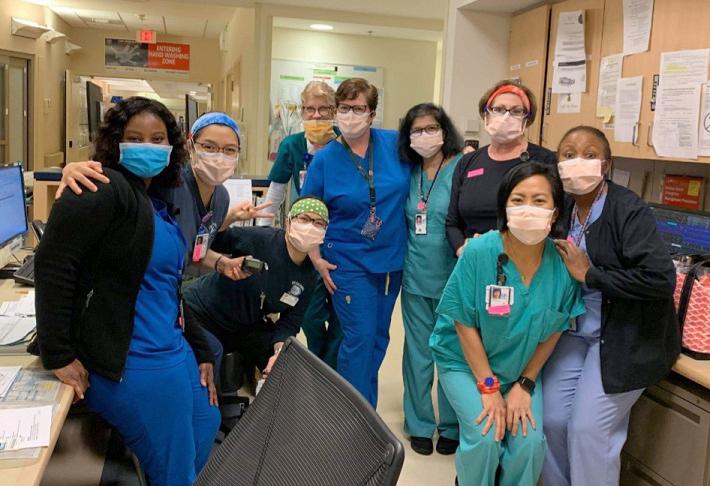‘Behind the Mask’ Seeks Your Pandemic Story

In June 2020, the Office of NIH History and Stetten Museum launched a project called “Behind the Mask: Real Stories from NIH Staff About Life During the Covid-19 Pandemic” to capture in-depth and personal views of what it has been like for NIH employees, contractors, fellows and volunteers during the worst pandemic in over a century. The project has since recorded the efforts of dozens of staff, as well as the daily inconveniences of Covid, the hobbies that NIH’ers have pursued, the personal and professional opportunities that have arisen and predictions on how the pandemic will change NIH.
More than 35 NIH scientists—whose research ranges from developing 3D cellular lung models for antiviral testing to studying how interferon-stimulated genes antagonize the S-protein of coronaviruses—have been interviewed.
NIDA director Dr. Nora Volkow and NIAAA senior investigator Dr. Vijay Ramchandani relayed what their institutes are doing to address Covid’s effect on people with substance-use disorders.
NHLBI senior advisor Dr. George Mensah and NIMHD deputy director Dr. Monica Webb Hooper spoke of how NIH is handling health inequities. Clinical Center nurse practitioner Therese Kent recalled what it has been like caring for patients with Covid-19.

Accounts from program officers, grant reviewers, human resource specialists, communication professionals, IT technicians and information specialists exemplify how it takes the labor and expertise of countless individuals to execute the details of NIH’s battle plan against the pandemic. Unsurprisingly, the challenge of teleworking was a major topic of conversation, too.
The project also has revealed how staff have been touched by this devastating disease personally. Some employees have been infected by the virus themselves while others have witnessed their loved ones suffer or die. IT specialist Janice Solomon, whose uncle died from Covid-19, said, “Only 8 family members could attend the funeral in person, and 56 of us attended online. [N]one of us could grieve together.”
Feelings of anxiety, stress and depression have affected many NIH staff members as they struggle to cope with isolation, increased responsibilities on the home front, changed routines and shifting priorities at work, the inability to perform their jobs, and distressing events occurring across the country and abroad.

Photo: Franda Liu
Contributions to Behind the Mask will be the primary source material that historians will use to understand this critical time and will be invaluable for capturing the grit, imagination, collaboration and humanity of the NIH workforce.
To learn how you can submit your story or donate artifacts such as scientific or clinical instruments or personal creations, go to https://history.nih.gov/display/history/Behind+the+Mask. You can see examples of several interviews conducted thus far at https://go.usa.gov/xAd5H.
For more information, contact archivist Gabrielle Barr at gabrielle.barr@nih.gov.

